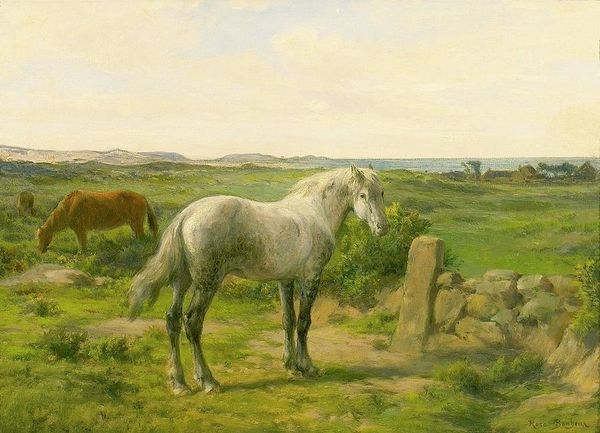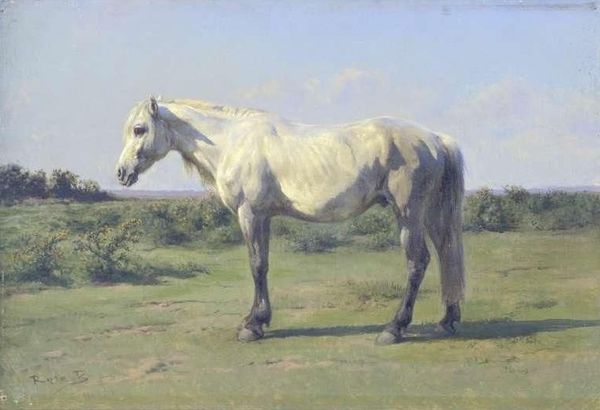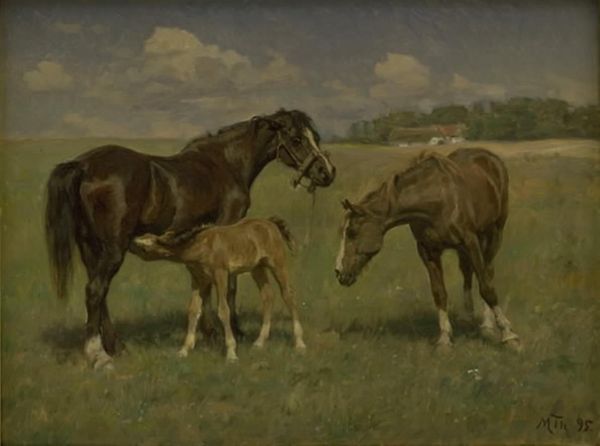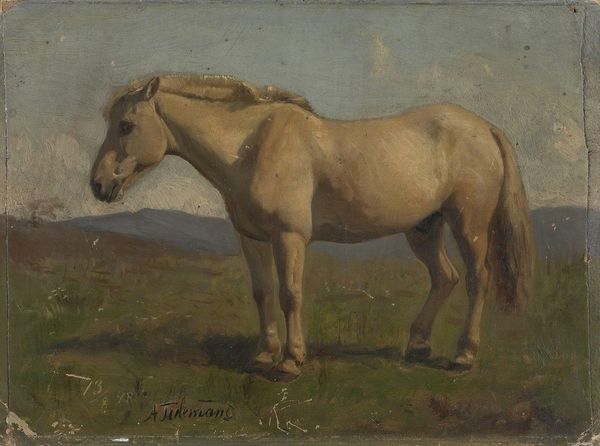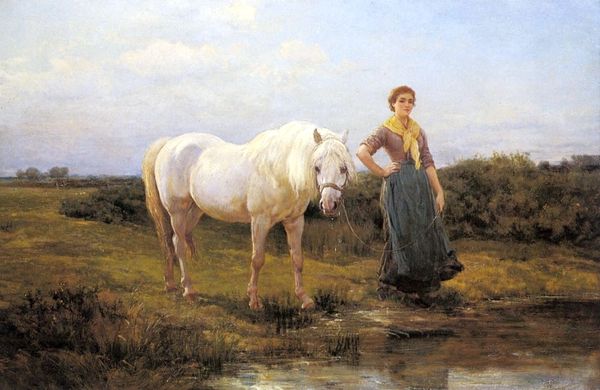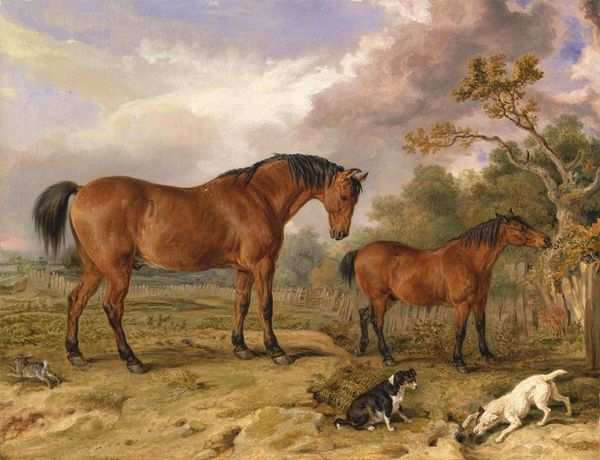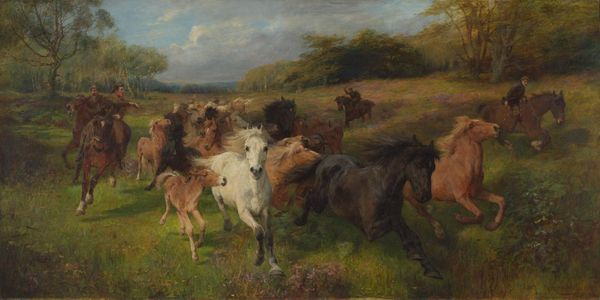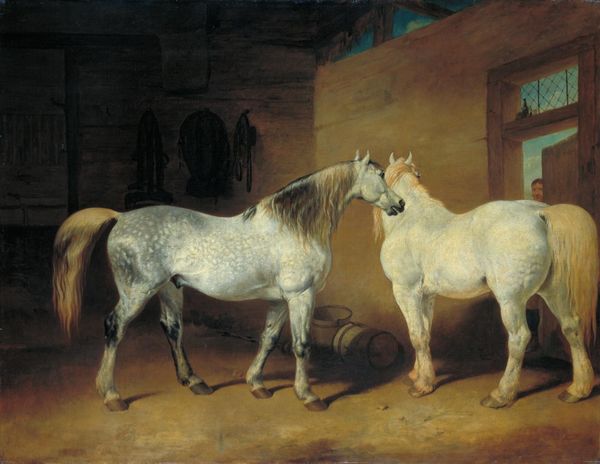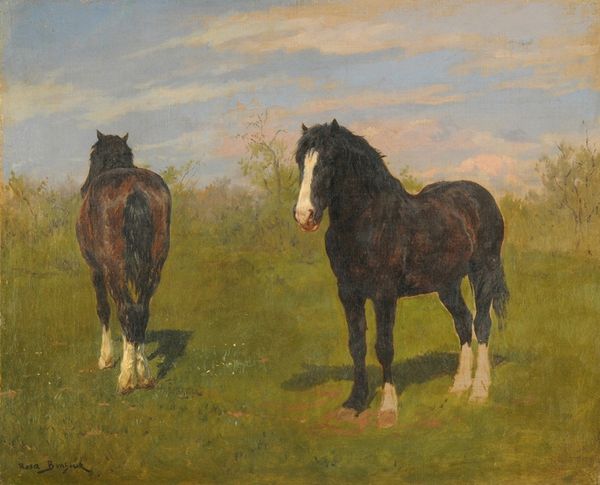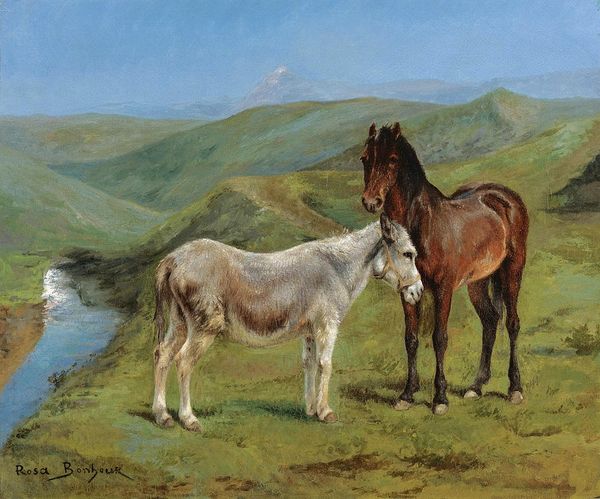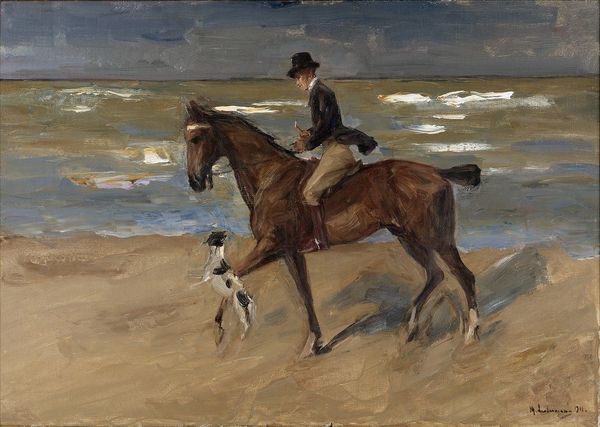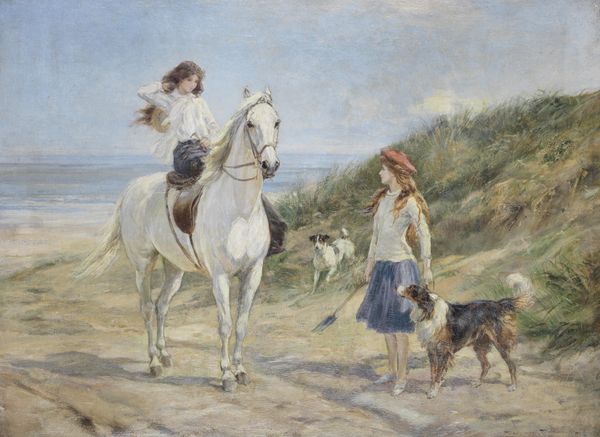
plein-air
#
plein-air
#
landscape
#
nature
#
oil painting
#
animal portrait
#
horse
#
realism
Copyright: Public domain
Curator: At first glance, the subdued palette evokes a sense of serenity, almost melancholic. The composition is dominated by the two figures, horses standing on a promontory. Editor: Indeed. The piece, titled "Mother and Son", was completed in 1881 by Henry William Banks Davis. It’s an oil painting, showcasing a mare and foal set against a coastal landscape. Curator: Notice the application of paint; Davis uses rather loose brushwork which seems at odds with the precise realism elsewhere in the work. It is particularly evident in the sky and the horses' manes. It gives an ephemeral, plein-air feeling that hints at the transient nature of the moment. Editor: Davis was a proponent of naturalism, portraying rural life with a focus on accuracy. It's interesting how paintings like this fed into a romanticized vision of the countryside that served various political agendas during a time of immense social change. Consider the industrial revolution and urbanization. The open countryside offered a type of escape to some elites, it served to affirm traditional hierarchies. Curator: I’m particularly interested in the subtle interplay of light. The illumination on the mare throws her into relief, defining the muscles and emphasizing form. This also helps with contrast against the darker foal, really grounding them. Editor: The imagery speaks to broader social concepts around family and rural life. The choice of a mare and her foal immediately connects to fundamental human emotions, themes of nurturing and continuity of the herd. These resonated with late 19th-century society and also helped bolster narratives around traditional societal structures. Curator: Perhaps, or maybe we read into it as the foal nudges close into its mother; one is instantly invited to notice its careful positioning against the mare’s protective flank. Editor: The interesting detail here is how Davis frames these figures within an almost timeless composition, offering the chance to interpret visual themes and history across eras and diverse interpretations. Curator: It’s difficult not to respond emotionally to such elemental staging, though. Ultimately the composition succeeds because its artistic language is simple. Editor: I see the interplay of brushstrokes now as brushstrokes in the history of this image, which might show its impact within an increasingly disrupted world.
Comments
No comments
Be the first to comment and join the conversation on the ultimate creative platform.
